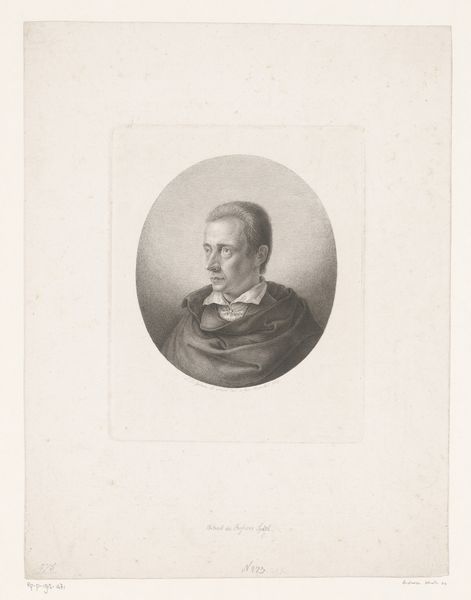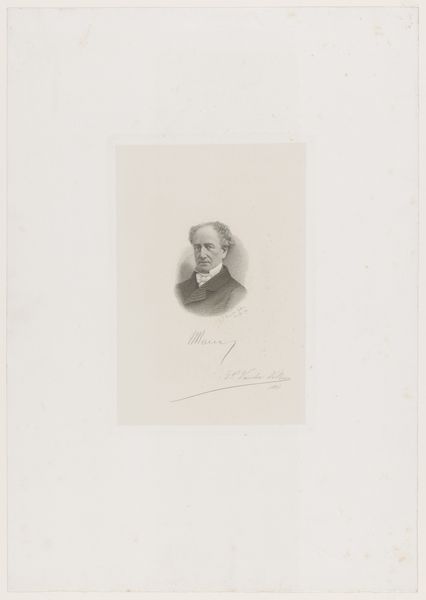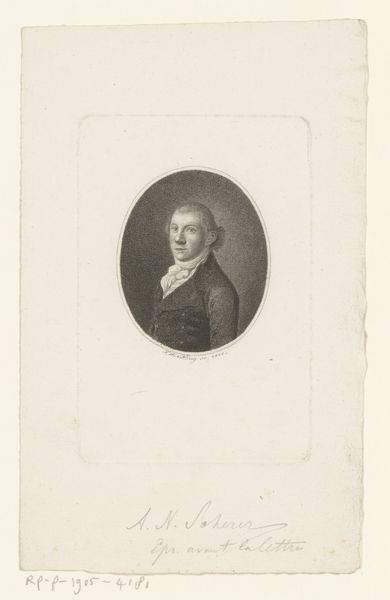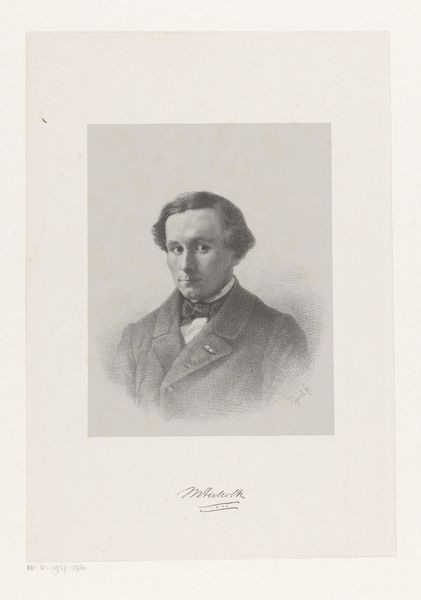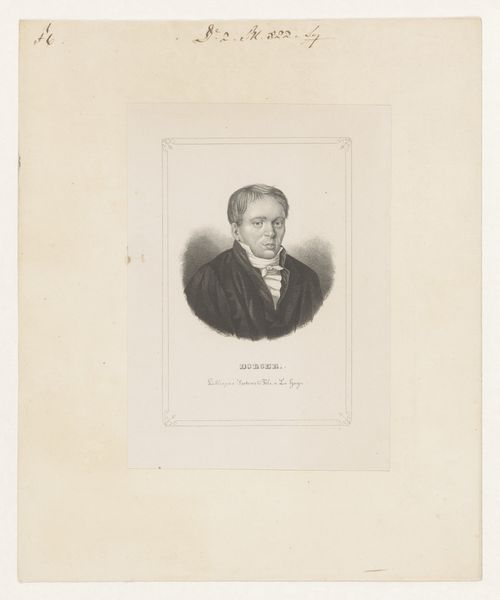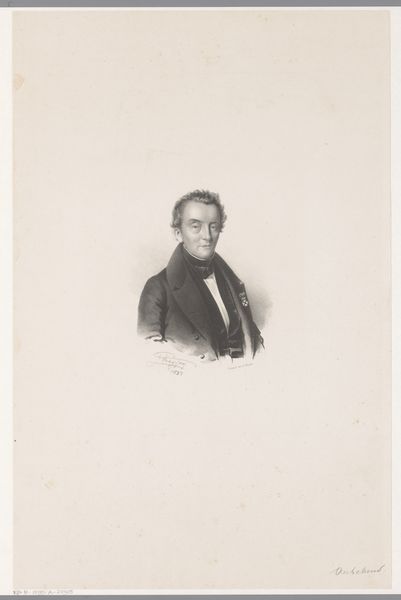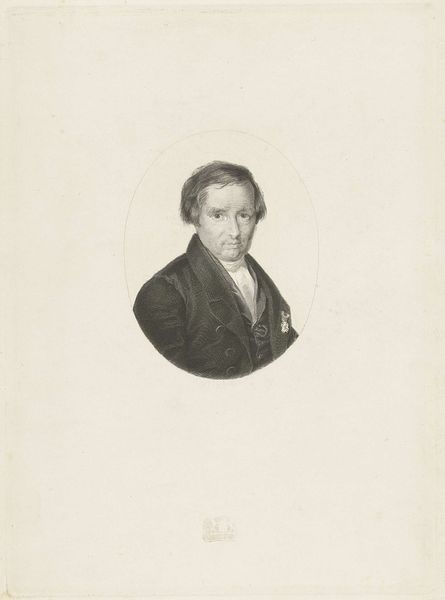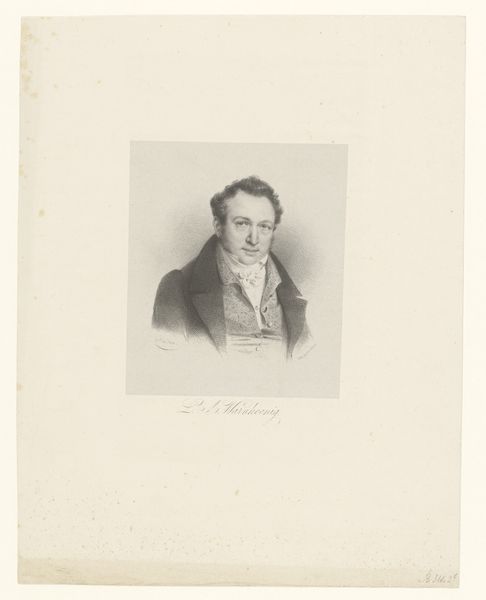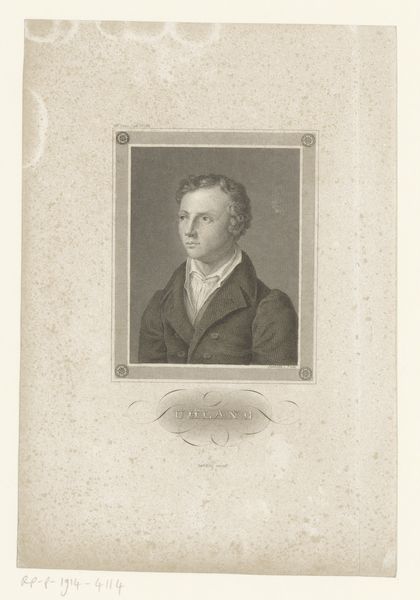
drawing, pencil
#
portrait
#
pencil drawn
#
drawing
#
neoclacissism
#
pencil sketch
#
pencil drawing
#
pencil
#
portrait drawing
#
academic-art
#
realism
Dimensions: height 259 mm, width 178 mm
Copyright: Rijks Museum: Open Domain
Editor: Here we have "Portret van Adrianus Bogaers," a pencil drawing by Joseph Bal, made sometime between 1830 and 1867. The delicate lines and shading create a very serene and composed atmosphere. What do you see in this piece, considering its historical context? Curator: It's interesting to note how a relatively simple portrait like this embodies the cultural values of its time. The Neoclassical and Realist styles merge to present Bogaers not just as an individual, but as a figure representative of civic virtue and perhaps even national identity. Consider the context: The Netherlands in the mid-19th century was solidifying its national consciousness. How might portraits like these have played a role? Editor: I hadn't considered that angle. So you're saying it’s less about Bogaers as an individual and more about him as a symbol within a larger social narrative? Curator: Precisely! These portraits, often commissioned by the rising middle class, became tools for self-representation within the public sphere. Displayed in homes and institutions, they reinforced social hierarchies and celebrated specific values. How does understanding this context change your initial impression of the work’s serenity? Editor: It makes it seem almost like propaganda, subtly reinforcing a certain image of success and respectability within that period. Curator: An insightful observation. Art, in its myriad forms, doesn't exist in a vacuum; it reflects, reinforces, and even challenges societal norms. Editor: This was truly fascinating, understanding the cultural and political forces influencing the creation and perception of art. I'll never look at a simple portrait the same way! Curator: Indeed, considering the public role of art is essential for a fuller appreciation. There is always a fascinating interplay between art and its time.
Comments
No comments
Be the first to comment and join the conversation on the ultimate creative platform.


